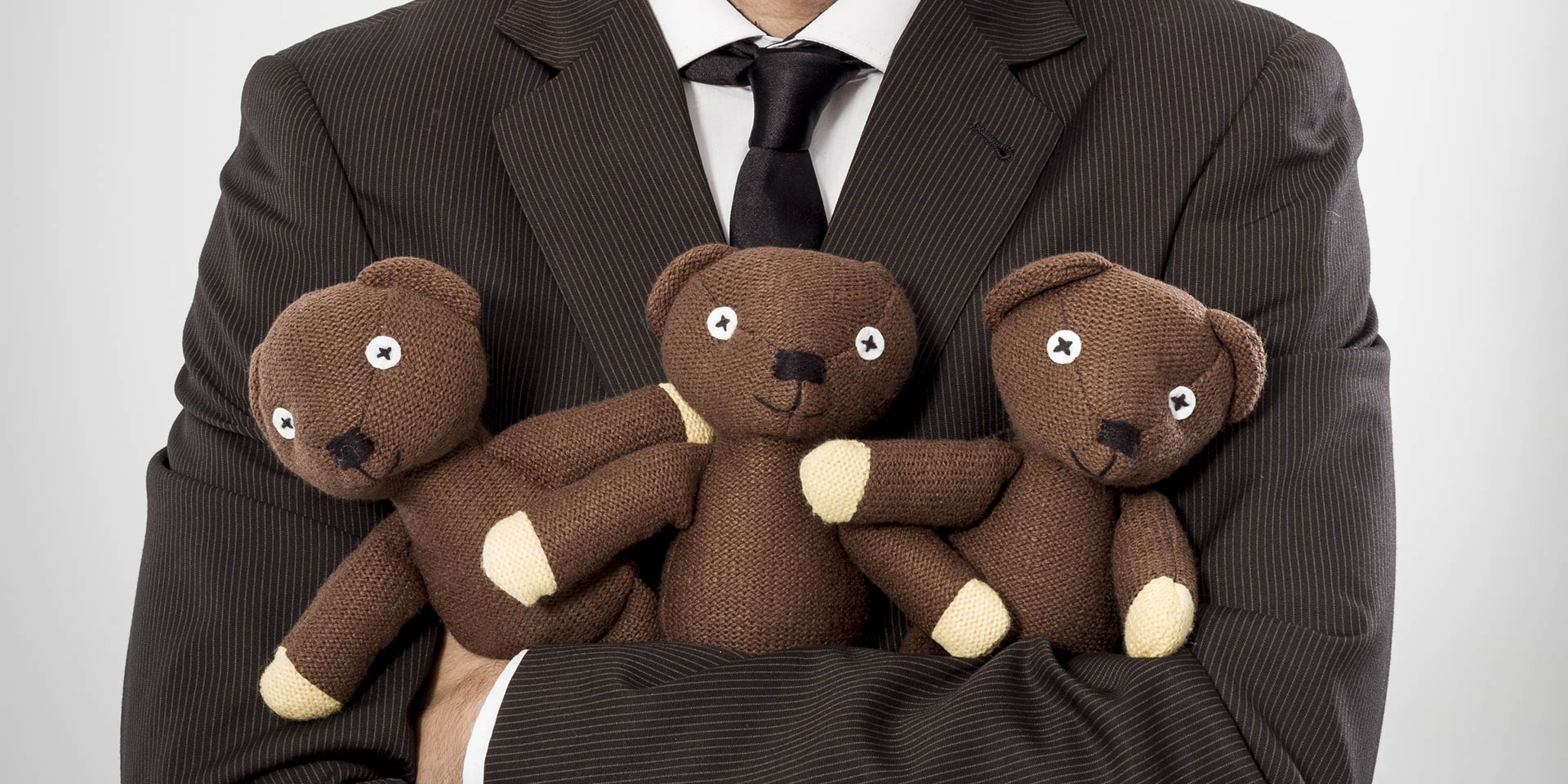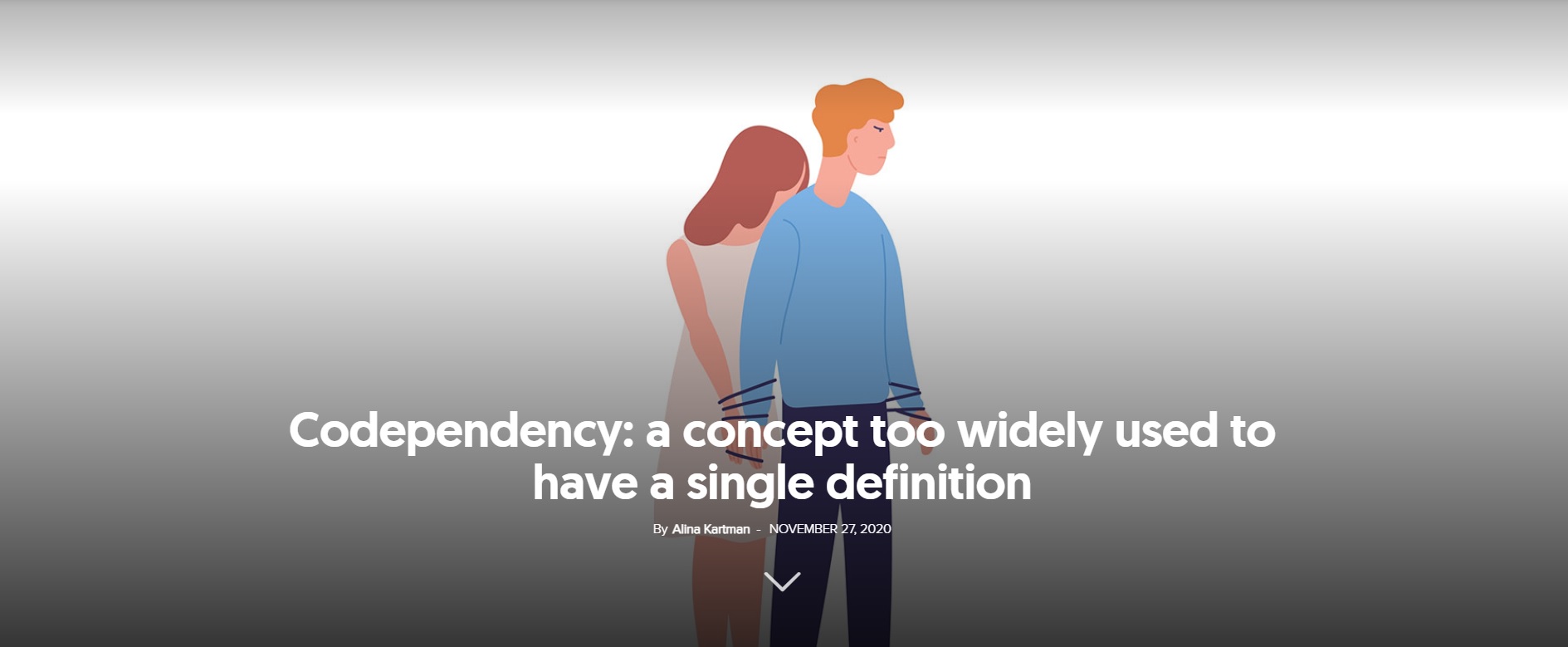The fascination of the universe of childhood, with its multitude of stories, experiences and impressions, is unrepeatable. As adults, however, we are often unaware that monsters may lurk in the shards of that magical past, hidden among dreams, memories and kites, ready to reactivate and injure us, while simultaneously anaesthetising us with a familiar sense of déjà vu.
Sean McCurdy was a born salesman. In high school, he was able to secure substantial amounts of money for advertising space in the school magazine, which grew from a humble leaflet to an 8-page magazine after his involvement.
As a salesman, he was persuasive enough to sell everything, from cars to shoes to nursery furniture. He could increase a sales department’s turnover by more than 100%, but he had one big problem: he couldn’t keep a job for more than a few months.
Once hired, things seemed to follow a natural trajectory of success. Whatever the job and whatever the nature of the goods he had to sell, Sean did well. Then, inevitably, a conflict with the boss would arise and the end would soon be in sight: Sean would lose his job, either through resignation or dismissal.
Thirteen jobs in just four years convinced Sean that there was a problem somewhere; unable to understand how he could keep finding himself in the same loop, he turned to psychologists for an answer.
Therapy would lead him down a path Sean previously considered absurd, to say the least. Behind the repetitive scenario in which he was the protagonist were old issues from the past. More specifically, it was the anger stored up from his childhood when his father abandoned his family, anger that now manifested itself against authoritarian male figures.
Peter Pan syndrome: codependency doesn’t cure itself
The term codependency has been used to describe a set of behaviours learned by family members of a person with an addiction (whether to drugs, work, sex, shopping, etc.) in order to cope with their own emotional pain and distress caused by the addiction of the other.
Codependency was identified after the founding of Alcoholics Anonymous, when professionals involved in the recovery of alcoholics realised how trapped other family members were in the cycle of addiction. Not only could they experience the same intensity of suffering as the person with the disease, but their lives were simply taken over by the effort to help, to hide the addict’s behaviour, and to adjust to a different family dynamic.
Understanding the codependency issues that the family of an addict develops has led to codependent support and recovery programmes such as Al-Anon and Alateen (for teenagers).
The seriousness of the problem is compounded by its permanence: addiction and codependency problems are passed on from generation to generation unless the vicious cycle is broken. The authors of Love is a Choice, two psychiatrists and a psychologist, quote a poignant but responsible statement by one of the patients treated for codependency in their clinic: “I’m not sure I’ll ever fully achieve peace and happiness, but I’ve saved my children from this pain.”
Certainly, treating codependency prevents the transfer of the codependent person’s negative traits to their children through imitation. The character of the codependent person is described in dark tones (e.g. the codependent person is certain that his or her happiness depends on others, feels excessively responsible for others, worries and struggles with problems beyond his or her control, his or her actions are characterised by extreme polarisation, etc.).
On the other hand, a child’s emotional needs cannot be met if the parents are in deficit (and the emotional reservoir of the dependent or codependent is usually quite empty).
A truth as piercing as pain
One of the greatest gifts parents can give their children is to resolve old issues so that they are not left for their children to sort out, writes Tian Dayton, author of The Drama Within: Psychodrama and Experiential Therapy. She points out that in adults who come from highly dysfunctional families, childhood traumas are reactivated when they become parents.
Our ideas about life and family are formed in childhood, which is why “we are bound (or condemned, some would say) to repeat the family experience we remember.”
We recreate the family environment in which we were brought up—of course, with the imprint of our uniqueness—and if there were dysfunctions in it that caused us distress, we relive the pain of the past for many reasons.
Firstly, because we as adults have the impression that by reliving the past we are finally correcting it, righting its wrongs. Codependent people feel an overwhelming desire to activate the known family framework and put all the pieces back in place where they should have always been.
A woman who has been physically abused by her father falls into relationships with men who abuse her. A man whose parents always showed him that he was nothing but an unwanted child marries an emotionally unavailable person. The same dysfunctional environment from which codependent people come is thus unconsciously recreated, as a kind of broken inner compass draws them towards people trapped in the same dependency syndrome.
A second reason why childhood suffering is relived in adulthood is the guilt we have carried with us over the years. A child may feel that he or she played a role in the parents’ divorce, blaming himself or herself for a failure that he or she finds painful—that of not being able to keep the parents together.
In his book Perfect Daughters: Adult Daughters of Alcoholics, Robert J. Ackerman, professor emeritus at Indiana University of Pennsylvania, identifies perfectionism and the struggle for control as two consequences of the trauma experienced by children whose parents divorce. The effects of the trauma are amplified if at least one parent was an alcoholic (or had some other addiction that distorted the healthy pattern of intra-family relationships), so that “many adult daughters can’t get a divorce from the divorce.”
A third reason is the desire to live among familiar things, with the relative sense of security they provide.
The trials and tribulations of alienating familiarity
Security is a much more pressing need for the codependent than for the normal adult.
Of course, his or her environment may have provided too little security, but this is the only normality the codependent has known, and he or she feels a pressing need to rebuild it.
Migratory birds and species of fish that return before death from the vastness of the ocean to the rivers where they were born, prove living creatures have an ingrained instinct to find their way home. In humans, too, there is a longing for home that is constantly being rewritten in the most diverse experiences and circumstances.
It is precisely because of these ingrained patterns that healing is difficult and, paradoxically, when it happens, it can upset the balance of those close to the addicted person, proving their deep affliction and immersion in a codependency that they cannot let go of because it has become too familiar. This is why the first year of the alcoholic’s recovery is a litmus test of the family’s resilience.
Lee Taylor, family therapy coordinator at Castle Craig, talks about how the support system encourages an alcoholic in their addiction and becomes complicit in the addiction even without realising it. The spouse, children, parents, peers, and friends cover for the alcoholic, lie for him or her, clean up his or her mess, repair his or her damage, pay his or her debts, so in a way the addict doesn’t even have to get better. They have someone to pick up the pieces. The closer family members are to the alcoholic, the more they become absorbed in the task of managing the problem, thus filling roles that encourage addiction.
Every member of a troubled family plays the role of accomplice to some degree, say the authors of Love Is a Choice.
Robert J. Ackerman even speaks of role confusion, especially in the case of daughters of alcoholics, who take on aspects of the role of a mother who is exhausted from managing the situation or who is in a conflictual relationship with her addicted partner. In such cases, we can speak of an emotional incest in which the child becomes like a life partner (husband/wife) for the parent. The meaning of the affectionate bond is distorted: a parent who has little to offer emotionally recharges his or her emotional batteries by draining the child’s reserves. This is a family disease, Taylor concludes, but it is a disease that is kept behind closed doors, at least as long as camouflage is still possible, because addiction is the twin sister of denial, and together they go down the spiral of degradation.
However, when the miracle of quitting alcohol does happen, there is a possibility that codependent loved ones will suffer as the role they played before—of victim, of hero—comes to an end. And they don’t know how and can’t take on any role other than the familiar one, which is often deeply ingrained.
The authors of Love Is a Choice argue that the first year when the alcoholic gives up the habit is very difficult for the whole family, so they try to warn couples about the crises that can be expected. They use the metaphor of a four-layer cake to explain why a crisis occurs when one might expect all relationships to be revived once the source of conflict has been removed.
The top layer of the cake is made up of visible symptoms. Alcoholism, food obsession, and overwork are easy to identify because they are on the surface. The second layer is the relationships that have been damaged and distorted by various forms of abuse, which form the third layer of the cake. The bottom layer is the hunger for affection in every human being.
In the alcoholic’s family, the addiction has caused the codependency of the partner (and the rest of the family). The authors point out that adults who have acquired codependency in the family of origin tend to marry addicted or codependent partners, so that the “dowry” they bring may not be a very good prognosis for the relationship. For example, the husband’s addiction may cause distress to the partner, but it also provides a familiar environment in which she can play a role she has assumed since childhood (perhaps that of rescuer or victim). When therapy resolves the problems at the surface level, the symptoms can no longer be the only excuse, and the second layer of the cake comes to the fore—we’re talking about the relationships that may already have been distorted by the previous codependency, and which have certainly deteriorated as the addiction has persisted. This is a time of crisis, when all relationships need to be reconfigured and family roles redefined or adjusted.
Peter Pan syndrome: trapped in a web of roles
Our lives are real maps of interpersonal relationships. Codependency distorts the web of relationships, either constructing roles we should never play or corrupting otherwise legitimate roles.
In the book Rehearsal For Living: Psychodrama, Adaline Starr, a group therapy consultant, defines a role as “a pattern of behaviour that a person develops from his life experiences in order to cope with the situations he faces.”
We play a variety of roles that interfere with each other in their complexity: parent/child, boss/employee, husband/wife, teacher/student, doctor/patient, etc. We may excel in some, be mediocre in others, and fail miserably in one or more roles. Behind each role are not only lived experiences, but also needs, fears, and secondary benefits, notes Tian Dayton. Moreover, if our mental health is tied to the ease with which we move in and out of certain roles, then being stuck in a particular role is pathological. In this case, “the role plays us.”
Children from dysfunctional families learn roles that prove to be at least partially functional: hero (the one who takes on all the tasks and solves them), scapegoat, mascot, and so on. As adults, they remain stuck in these roles that have become ineffective, but which in childhood functioned as a survival mechanism, providing the solution that involved the least amount of suffering.
In learning a role, we go through three stages: role taking, role playing and role creating.
Role taking takes place through imitation, the most powerful form of learning, by which we internalise what we perceive and experience. Tian Dayton points out that in this first stage, awareness remains low, so an instruction such as “Do as I say, not as I do” has no real impact.
Words and physical contact remain etched in our memories, and as we mature as parents, this information is reactivated and we become parents who treat our children as we were treated.
Rescuers in need of rescue
Early roles in pathological environments can later create an attraction to professions that involve helping others (clergy, social workers, doctors, psychologists, etc.). Unmet needs take the place of real vocation, and the result is that rescuers eventually break down, throwing those they have rescued out of balance. The reason for this is that they rebuild relationships and contexts from the past and, through rescue actions in the present, they struggle to rewrite the past according to new rules. In the role that he or she plays, the rescuer takes the place of the victim in an attempt to save him- or herself through the victim.
This was the situation Sean found himself in, although his profession was not that of a rescuer. He projected the image of his absent father onto his bosses, and his expectations of them were therefore unrealistic. The bosses became surrogate fathers, and when they failed to live up to expectations, the relationship became very tense. The therapists who counselled him claim that Sean was constantly recreating the father-son relationship, only to experience the anger and disappointment of not being able to repair it.
Separation from home
Children separate from their parents gradually, going through several stages until they become completely independent. Codependent people fail to complete the separation process, although Christian psychologists assure us that this is an important step in the healing process. Continued financial support from the parent to the adult child is both a symptom of codependency and an indication that the adult is not ready to leave the comfort of the parental nest.
The principle of emotional separation from the old home is a biblical one, and if applied wisely it can be an aid to the healthy development of other important relationships, especially with one’s spouse. The critical point about separation is that although codependent people have the greatest need to go through this process of saying goodbye, the more disrupted the home environment, the more difficult the separation.
Sometimes, the parents are no longer alive, but separation remains an imperative even in these circumstances. Unresolved conflicts are a burden that the adult needs to get rid of, shame and guilt complexes inherited from the family need to be acknowledged and healed, and parental mistakes need to be recognised and forgiven, otherwise healing cannot take place. Sometimes, when possible, a face-to-face conversation with the parent, handled with equal parts gentleness and firmness, may be indicated. After all, Christian psychologists point out, there is a purpose to this ordeal: The deepest form of respect for your parents is to become what God intended you to be.
Peter Pan Syndrome: steps towards healing
“There are no hopeless situations; there are only people who have grown hopeless about them” (Clare Boothe Luce).
The recovery of a person caught in the web of addiction or codependency is not easy and does not happen overnight under the effect of a magic formula. However, as difficult as it is, the journey of healing can be taken step by step—not by dwelling on the past, nor by anticipating the future with its endless opportunities for relapse. In Alcoholics Anonymous group meetings, people introduce themselves with the formula “My name is X and I’m an alcoholic,” even though X may have been sober for a year. There’s only a drop of alcohol between them and their old addiction, so they remain alcoholics (in the sense that the addiction lurks, preying on vulnerable moments), but are also winners because they’ve decided not to drink for a day—and then another, and another, renewing their decision every day.
There is a natural tendency for the emotional development of addicts to be stunted or even reversed during the course of chemical dependency, says Glynis Read, training coordinator at Castle Craig. But the good news is that recovery is about emotional maturation and rebuilding, and it is possible if there is strong motivation and a willingness to make big changes.
R. Hemfelt, Frank Minirth and P. Meier emphasise the role that God plays in healing from any addiction. They recommend daily routines (taking stock of old and new habits in individual prayer times), regular check-ins and group therapy to consolidate new skills and patterns of thought and action.
However, beyond these absolutely necessary tools, the authors of Love Is a Choice believe that the human will needs a more powerful helper than itself to see healing through to the end. After all, addictions have a way of creeping back through any open window, no matter how firmly they’ve been kicked out the door. That’s why the authors stress the need for faith in a God who cares. This perspective can bring stability and balance, along with a sense of being loved unconditionally, despite flaws, mistakes, and relapses. It can also open up a healing perspective, suggesting that it is possible to move beyond the boundaries of the family into which one was born into the adoptive family of a God who wants to be our Father. And this reality is capable of reviving responsibility and hope for the future and redefining the meaning of life.
Healing passes through the hands of the wounded One
Sceptics might say that this paradigm begins with one addiction and ends with another. For a Christian, however, the paradigm is quite different: Jesus Christ is the Truth and He breaks all chains.
If the truth about who He is (from which the truth about our identity and destiny flows) is not found, life can crumble into that void, like the legendary Golem after the inscription emet (‘truth’) was erased from its forehead.
Unfortunately, dysfunctions in relationships with fellow human beings also migrate to the relationship with the divine. Religious people use biblical arguments to justify their dependence or codependency. Those whose parents’ behaviour has depleted their emotional reservoir transfer the reproachful traits of the parental figure onto God. Adults with a history of childhood abuse, who have never known a sense of acceptance, strive to live within the confines of rigid concepts and behaviours in order to gain divine approval.
At the same time, nothing but God’s power can eradicate the tentacles of deep-seated addictions. When introducing God into the recovery formula, the founders of AA used more vague formulas such as “a power greater than ours” or “God as we all understand Him” to allay the concerns of the non-religious.
The reality is that there is a framework in which He has revealed Himself to us as He really is, relieving us of the effort of imagining Him according to our subjective and distorting criteria. But what the founders of the organisation understood is that the disfiguration of humans cannot be repaired without the intervention of the One who created them in the first place.
Being stuck in the role of a child who fails to complete the journey of growing up, beyond the fictional confines of Neverland and the avatars of Peter Pan, is never a winning option. And the idea that the emotional health of an adult is a matter of individual wellbeing alone is misleading. A healthy adult is the prerequisite for the next generation of children to settle naturally into a true childhood.
Carmen Lăiu is an editor at Signs of the Times Romania and ST Network.


















